Neptune is an intriguing planet. However, there is still a lot that people don’t know about it. Perhaps it’s because Neptune is the farthest planet from our Sun, or because there have been so few exploration expeditions so far out into our Solar System. In this post, we present you with some of the most interesting facts about Neptune Planet.

Neptune is a gas (and ice) giant full of wonders, regardless of the reason! Neptune is one of our Solar System’s windiest and intriguing planets. They travel at rates of over 1,200 miles per hour around the globe. The fastest winds on the planet only exceed 250 miles per hour.
Table of Contents
We’ve gathered a list of 14 interesting facts about Neptune below. You may be familiar with some of these. Others, on the other hand, are certain to surprise and perhaps even astound you-:
1. Neptune has only had one spacecraft pass through it-
The Voyager 2 spacecraft flew by the planet in 1989. It returned the first photographs of the Neptune system from a close distance. A number of ground-based telescopes, as well as the NASA/ESA Hubble Space Telescope, have investigated this planet.
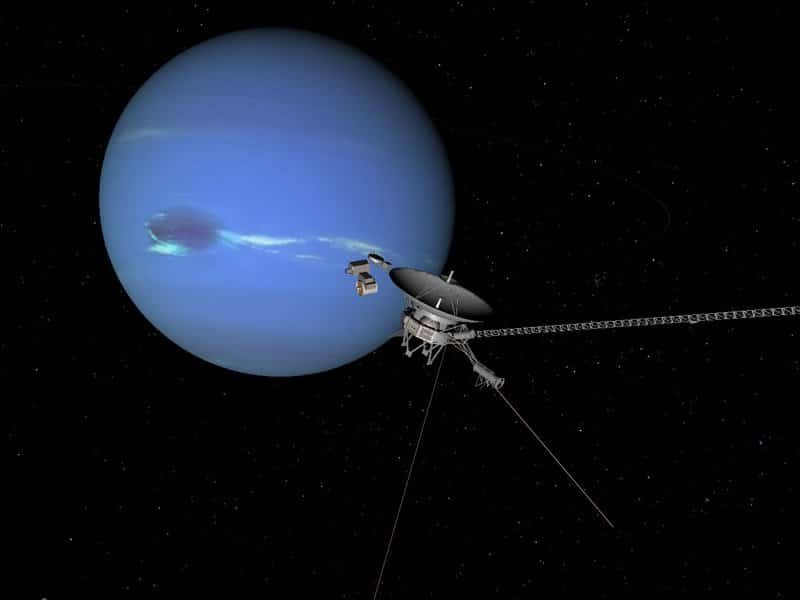
2. Neptune has a total of 14 moons.
Triton is the most intriguing moon, a frozen globe spouting nitrogen ice and dust particles from beneath its surface. It was most likely grabbed by Neptune’s gravitational attraction. It’s most likely the coldest planet in the solar system.

3. Neptune’s climate is quite dynamic-
Large storms rage in the planet’s upper atmosphere, and high-speed winds reach speeds of up to 600 metres per second. In 1989, one of the most powerful storms ever recorded occurred. The Great Dark Spot was its name. It lasted for almost five years.
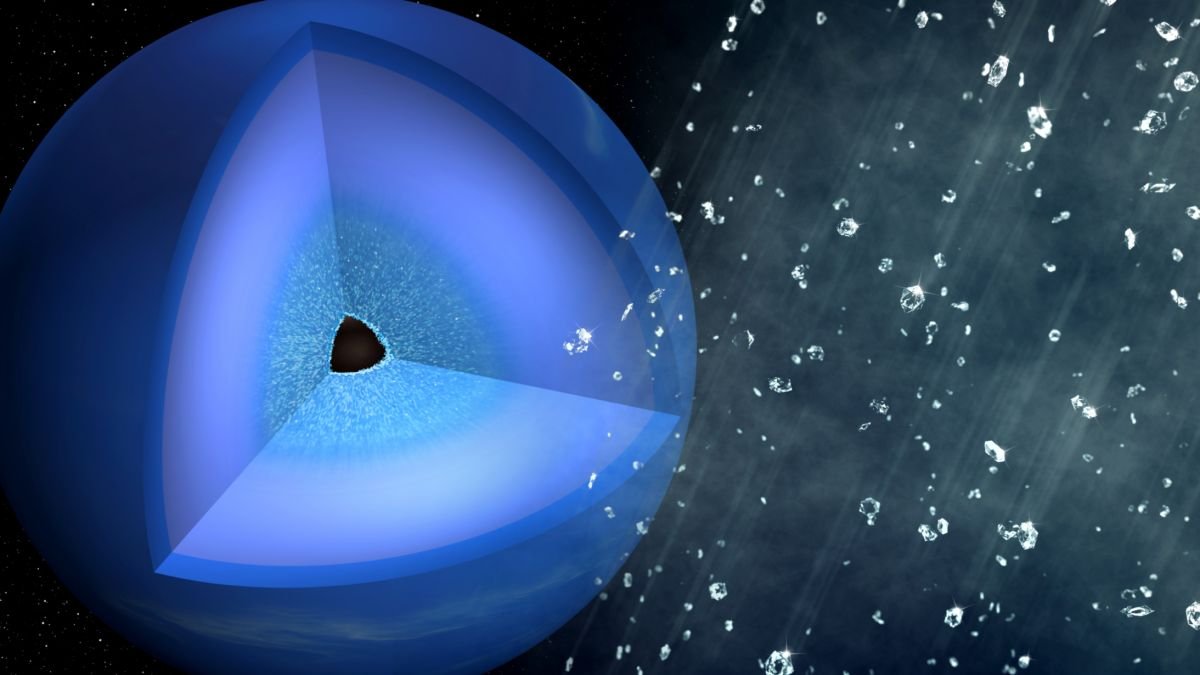
4. Neptune’s ring collection is extremely sparse-
They’re most likely composed of ice particles combined with dust grains, with a carbon-based coating.

5. The ice giant Neptune is the tiniest of the ice giants-
Despite its smaller size, Neptune has a larger mass than Uranus. Uranus is made up of layers of hydrogen, helium, and methane gases beneath its dense atmosphere. They have a coating of water, ammonia, and methane ice surrounding them. The planet’s inner core is formed of rock.
6. Neptune’s atmosphere is mostly hydrogen and helium, with some methane thrown in for good measure-
Because methane filters red light, the planet seems to be a gorgeous blue. In the upper atmosphere, high, thin clouds glide.

7. The ancients had no knowledge of Neptune-
It was discovered in 1846 and is not visible to the naked eye. Mathematical predictions were used to determine its location. It was given that name in honour of the Roman god of the sea.
8. Neptune spins incredibly quickly on its axis-
One revolution of its equatorial clouds takes 16 hours. This is due to the fact that Neptune is not a solid body.
9. Neptune’s Surface Gravity is Almost Earth-Like-
Neptune is a gaseous and icy planet with a likely rocky core. There’s no way you’d be able to stand on Neptune’s surface without sinking in. However, if you were to step on Neptune’s surface, you would observe something incredible. The force of gravity dragging you down is nearly identical to the force of gravity you experience while walking on Earth.

10. Neptune is the Solar System’s Coldest Planet-
Temperatures on Neptune can reach 51.7 Kelvin, or -221.45 degrees Celsius (-366.6 degrees Fahrenheit), at the top of its clouds. That’s nearly three times the coldest temperature ever recorded on Earth (-89.2°C; -129°F), implying that an unprotected human would freeze in a split second! Pluto’s temperature drops to 33 K (-240 °C/-400 °F) as it grows colder. Pluto, on the other hand, is no longer a planet (remember?)
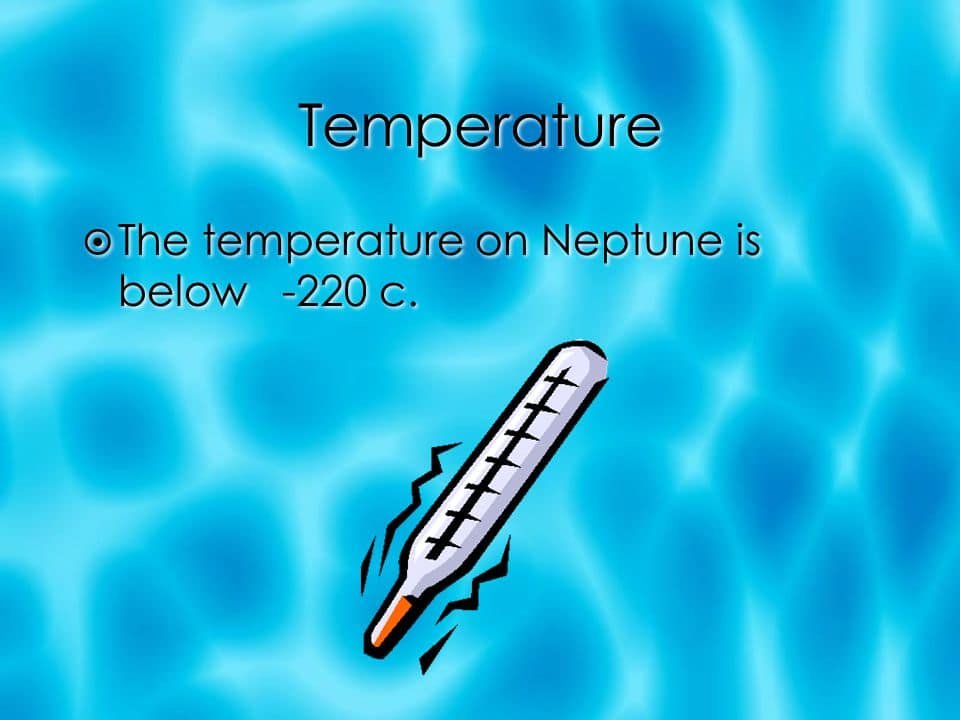
11. The Great Dark Spot on Neptune-
The Voyager 2 spacecraft initially identified the Great Dark Spot in Neptune’s southern atmosphere in 1989. It was a massive spinning storm system with gusts of up to 1,500 miles per hour, the world’s greatest winds ever recorded. The discovery of such violent winds on a planet so far from the sun remains a mystery to this day.
The Great Dark Spot changed in size dramatically during the Voyager 2 spacecraft’s brief transit of the planet, according to data from the spacecraft. The Great Dark Area had faded when the Hubble Space Telescope saw Neptune in 1994, but a new dark spot had developed in Neptune’s northern hemisphere.
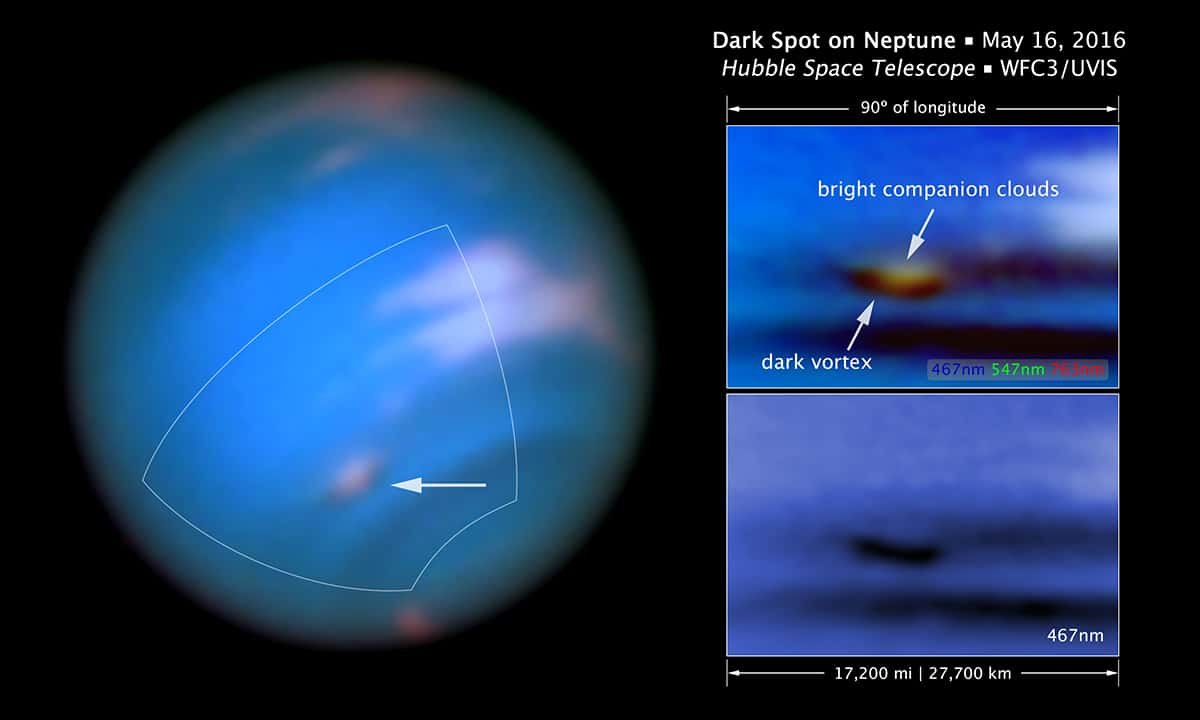
12. The Atmosphere of Neptune-
Neptune has an extremely thick atmosphere made up of 74 percent hydrogen, 25 percent helium, and about 1% methane. Its atmosphere also has the fastest winds ever recorded in the solar system, as well as frozen clouds. Neptune’s vivid blue colour is caused by ice methane and minor gases at the atmosphere’s extremes. Neptune is distinguished from Uranus by its dramatic blue and white characteristics.
The lower troposphere and stratosphere of Neptune’s atmosphere are separated by the tropopause, which marks the boundary between the two. Temperatures fall with height in the lower troposphere but increase with altitude in the stratosphere. Hydrocarbons produce smog hazes that cover Neptune’s whole upper atmosphere, as well as hydrocarbon snowflakes that fall from the sky.
13. Neptune’s Short Days-
Neptune, like other gas giants, has a short life span. One rotation takes 16 hours to complete. The rotation of gas giants is quite fast. Uranus, for example, takes 17 hours while Jupiter just takes 10 hours. Rocked planets, on the other hand, take longer to rotate; Mars takes 25 hours, while Mercury takes 1,408 hours, or 59 Earth days.
14. The Neptune Seasons-
Neptune’s axis of rotation is inclined, just like Earth and Mars’. Neptune can experience seasons because of its 28-degree tilt. Neptune’s seasons, on the other hand, last around 40 years because its orbit takes 165 Earth years!
Conclusion-
The ice giant Neptune is the eighth and farthest planet in our solar system, dark, frigid, and battered by supersonic winds. Neptune, which is more than 30 times the distance between the Sun and Earth, is the only planet in our solar system that cannot be seen with the naked eye and was the first planet predicted by mathematics prior to its discovery. We haven’t spent much time on this dark, frigid ice monster, but what we do know is that it will blow your space suits off! Here are 14 Interesting facts about Neptune.
Also Checkout: 20 Shocking Facts about Sharks

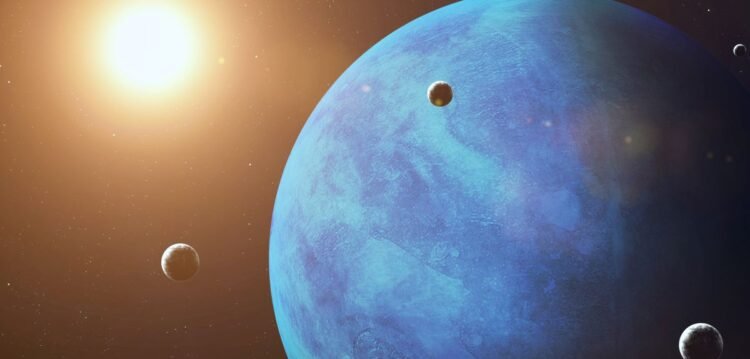













Comments 3